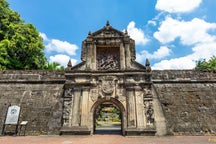
Mactan-Cebu International Airport (MCIA) is the second busiest airport in the Philippines and the main gateway to Cebu Island Province. Located on Mactan Island, approximately 15 kilometers from Cebu City, the airport is a modern travel hub that connects domestic and international travelers to some of the country’s top destinations.
Whether you're arriving for business, leisure, or a tropical island adventure, MCIA ensures a smooth and convenient entry point to explore Cebu Island province’s top attractions, like world-class beaches, historic sites, and vibrant city life.
For a hassle-free arrival, visitors can book Cebu airport transfers in advance, ensuring a comfortable and seamless journey from the airport to their hotel or resort.
Getting to and from the Airport
Travelers arriving at Mactan-Cebu International Airport have several options to reach their destination. The most convenient and stress-free choice is to book airport transfers, which provide a direct ride to hotels in Cebu City and beyond.
Private transfers are ideal for those who want to avoid long queues and ensure a smooth transition from the airport to their destination. For visitors who prefer flexibility, renting a car in Cebu City is a great option, allowing travelers to explore the island at their own pace, whether heading to the white sand beaches of Mactan, the scenic countryside, or the bustling streets.
Taxis and ride-hailing services like Grab are also available at the airport, offering a convenient way to get around. However, fares may vary depending on the time of day and traffic conditions.
Budget travelers can take public transportation, such as jeepneys and multicabs, but these can be crowded and may not be the best choice for those carrying luggage or traveling in groups.
What to Do After Landing
Upon arriving at Mactan-Cebu International Airport, travelers can immediately start exploring the province’s top destinations by booking tours in Cebu. Guided experiences highlight the island’s must-see attractions, from historical sites in Cebu City to stunning natural wonders in the countryside.
A Cebu City tour includes a visit to Magellan’s Cross and Basilica Minore del Santo Niño that provide insight into the province’s rich Spanish colonial heritage, while adventure seekers can go canyoneering at Kawasan Falls or swim with whale sharks in Oslob town.
For those looking for a more relaxing experience, Mactan Island is home to beautiful beaches and luxury resorts perfect for sunbathing, snorkeling, and diving.
To make the most of their stay on the island, many visitors opt for Cebu tour packages, which include accommodations, transportation, and may include guided tours to the best attractions.
These packages offer a hassle-free way to explore the island’s diverse landscapes, from pristine beaches and waterfalls to historical landmarks and lively city streets.









